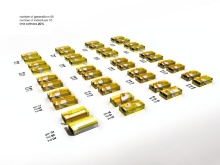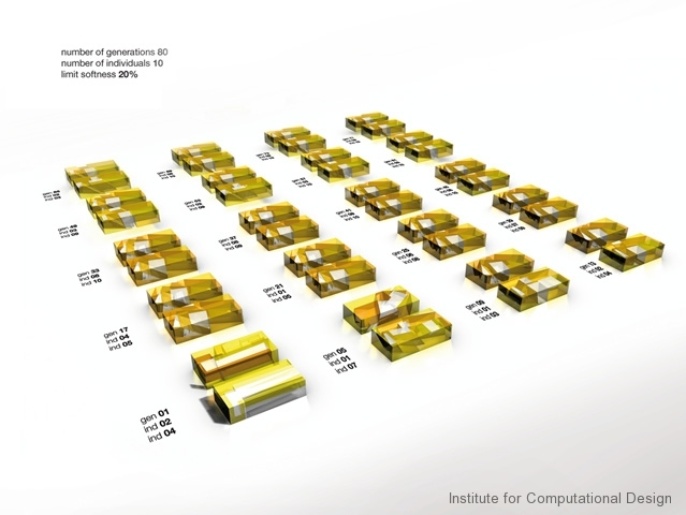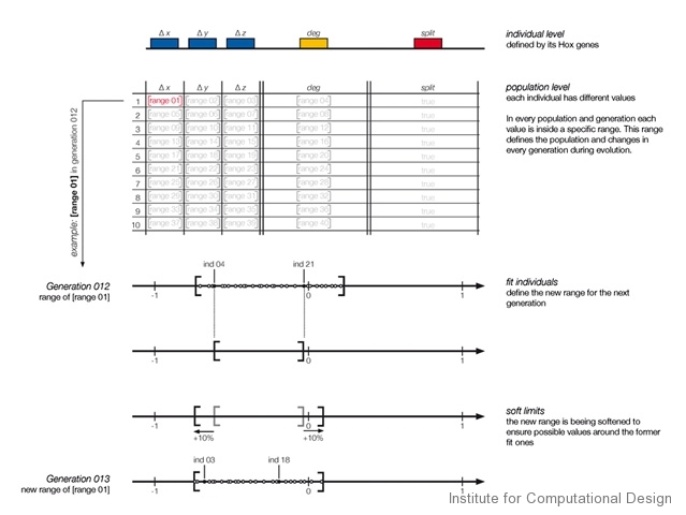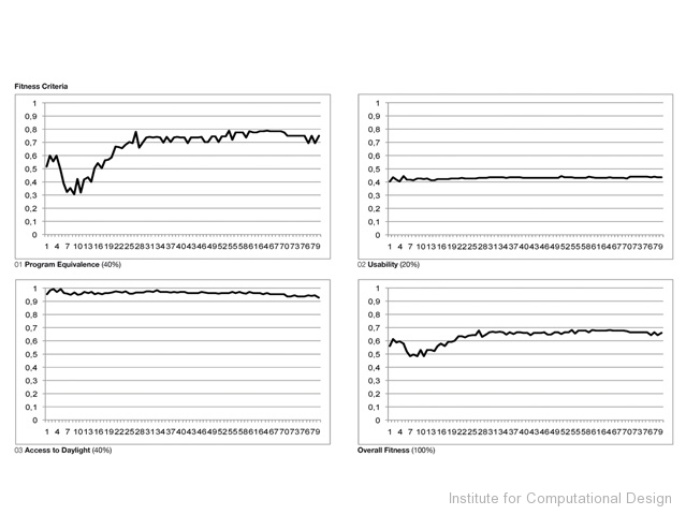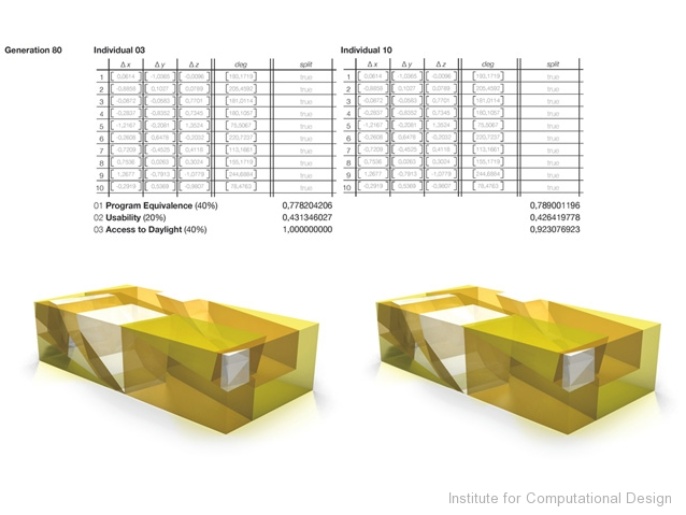Analyzing Daylighting and Spatial Capacities
Frederik Ernst, Florian Krampe, Oliver Krieg
The algorithm developed for this project subdivides a given volume using its current volumetric state and the variables of offset and rotate. The remaining volumes are classified determining solid and void spaces. This growth process continues until the remaining elements hit a minimum volumetric value. The criteria of program heterogeneity, volume-to-surface ratio, and access to daylighting are applied to determine the fittest individuals from generation to generation. The entire process is scripted in Rhino, and capable of quickly producing up to 80 generations.


